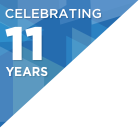Conference:March 6-8, 2017
Workshops:March 9-10, 2017
Presentation: Delivering Value While Behind Enemy Lines
Location:
- St James, 4th flr.
Duration
Day of week:
- Monday
Level:
- Intermediate
Persona:
- Developer
Key Takeaways
- Understand that a project has a higher chance of success if everyone is winning
- Learn how to be empathetic with others
- Discover techniques to bring people round to your key goals of the project
Abstract
Delivering software can sometimes feel like a battle against the organisation around you, rather than an exercise in working with it. Looking at how
Interview
I own a consultancy that delivers into the financial services industry. We have both large and small clients. We generally get called in to large organisations because they are unable to deliver internally for a range of reasons. It’s not always easy to define what success is in these organisations. As a consultancy, there’s an “us versus them” mental image which might suggest that “them” is homogenous; but that’s about as far from the truth as it gets. You’re inevitably dealing with half a dozen different individuals or groups who want to help you succeed; who are ambivalent; or who actively want you to fail. So our goal is to find out who each of those groups are so that we can engage with them in the appropriate way.
The talk highlights what delivering inside these large organisations can be like. Although they have a lot of legacy and inertia, as well as a reputation for poor quality engineering, it is possible to operate successfully inside them and manage perform quality engineering. But doing so requires more than just ‘quality engineering’. It requires engaging with the rest of the organisation, in a politically savvy way. When we arrive inside one of these large organisations, we can’t change their culture immediately, so we have some simple things that guide how we operate to allow us to make the biggest impact in the shortest possible time. The motivation for the talk is to share some of how we operate, as its what I wished I knew 4 years ago when I started doing this job!
The start begins before you’ve won the project. You need to identify who you’re engaging with in pre-sales - some percentage of the pre-sales prototypes turn into a project that you win, which helps identify the key players. Also, it is significantly different if you’re brought in by the business who want to roll out a new idea, versus IT who want to fix a pain point that they have. You also need to get the people who didn’t bring you on board on your side to be successful. From the IT side, there’s a bunch of things that we do - most of which has come from the realisation that the IT people don’t like working with consultants in case they show them up or tell them how to do their jobs. We quickly work towards a culture where they realise that we’re not here to take the glory for the project; they can take the kudos for the project. On the business side we highlight the quality and focus of different styles of project management, with the idea that there will be some in the business side who haven’t heard of the benefits of these styles or otherwise dislike it on principle. So we spend time talking to them asking about what their goals are on a quarterly basis, and shield them from the internal project management. It’s about empathy and having those conversations. The other trick that we’ve learnt is learning how far you can push it before things break while still keeping them happy. There’s a resistance to pushing too far because they’re scared about the end of year review process or stack ranking. We’re in a lucky position because we’re coming in from the outside and we can push until almost breaking point. We try and push far enough that we don’t necessarily aim to make friends, but we need to get the organisation over some pain points. Depending on who has brought you in, you have more or less clout depending on their political capital. Understanding the politics and finding out who are the problem characters, what you can do to make them succeed, or how to steamroller over if it can’t be changed.
It’s senior architects and leadership - anyone who has contact with business leadership in the organisation, and is perhaps frustrated with their ability to make real progress inside their organisation.
Similar Talks






Tracks
-
Architecting for Failure
Building fault tolerate systems that are truly resilient
-
Architectures You've Always Wondered about
QCon classic track. You know the names. Hear their lessons and challenges.
-
Modern Distributed Architectures
Migrating, deploying, and realizing modern cloud architecture.
-
Fast & Furious: Ad Serving, Finance, & Performance
Learn some of the tips and technicals of high speed, low latency systems in Ad Serving and Finance
-
Java - Performance, Patterns and Predictions
Skills embracing the evolution of Java (multi-core, cloud, modularity) and reenforcing core platform fundamentals (performance, concurrency, ubiquity).
-
Performance Mythbusting
Performance myths that need busting and the tools & techniques to get there
-
Dark Code: The Legacy/Tech Debt Dilemma
How do you evolve your code and modernize your architecture when you're stuck with part legacy code and technical debt? Lessons from the trenches.
-
Modern Learning Systems
Real world use of the latest machine learning technologies in production environments
-
Practical Cryptography & Blockchains: Beyond the Hype
Looking past the hype of blockchain technologies, alternate title: Weaselfree Cryptography & Blockchain
-
Applied JavaScript - Atomic Applications and APIs
Angular, React, Electron, Node: The hottest trends and techniques in the JavaScript space
-
Containers - State Of The Art
What is the state of the art, what's next, & other interesting questions on containers.
-
Observability Done Right: Automating Insight & Software Telemetry
Tools, practices, and methods to know what your system is doing
-
Data Engineering : Where the Rubber meets the Road in Data Science
Science does not imply engineering. Engineering tools and techniques for Data Scientists
-
Modern CS in the Real World
Applied, practical, & real-world dive into industry adoption of modern CS ideas
-
Workhorse Languages, Not Called Java
Workhorse languages not called Java.
-
Security: Lessons Learned From Being Pwned
How Attackers Think. Penetration testing techniques, exploits, toolsets, and skills of software hackers
-
Engineering Culture @{{cool_company}}
Culture, Organization Structure, Modern Agile War Stories
-
Softskills: Essential Skills for Developers
Skills for the developer in the workplace







